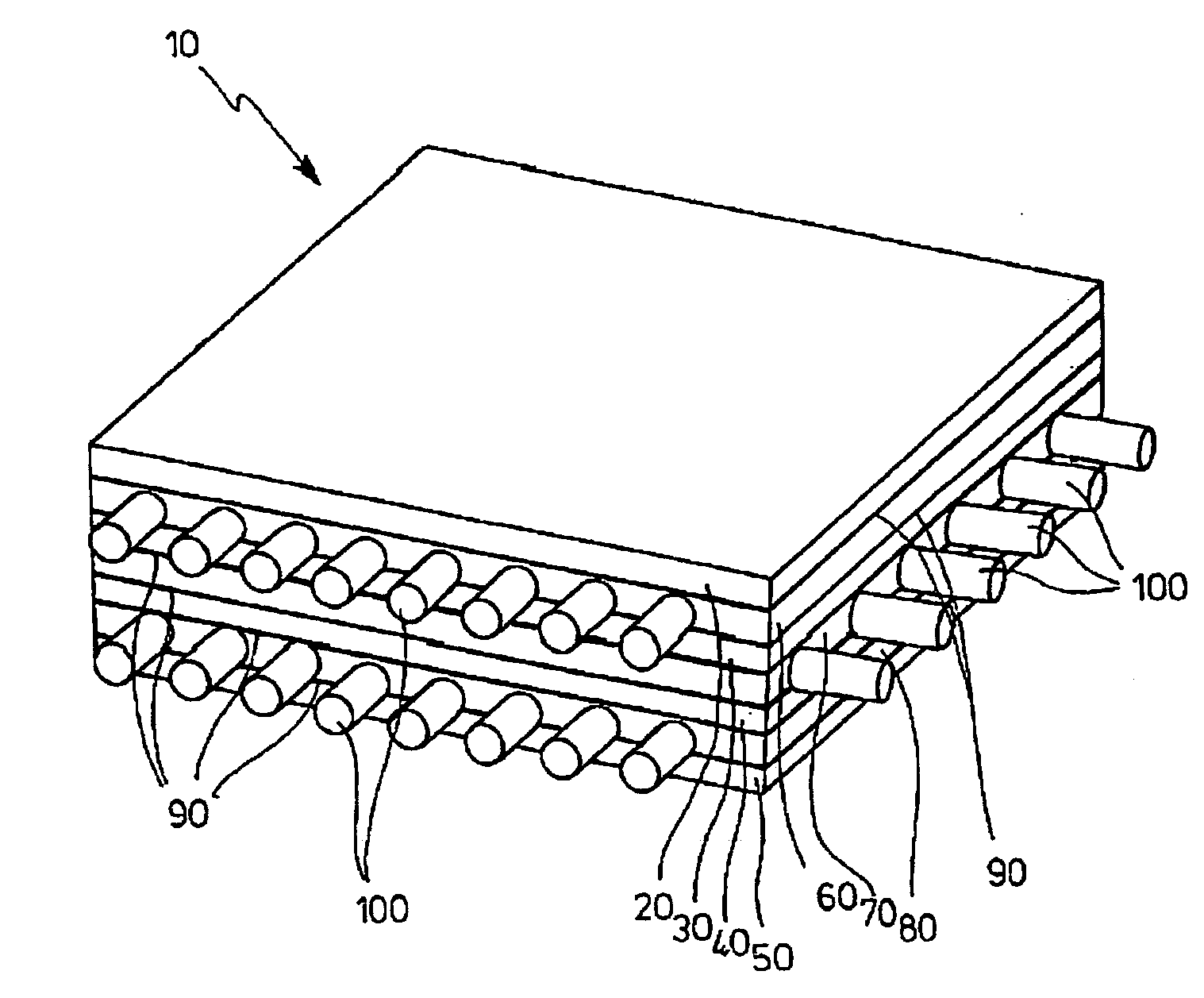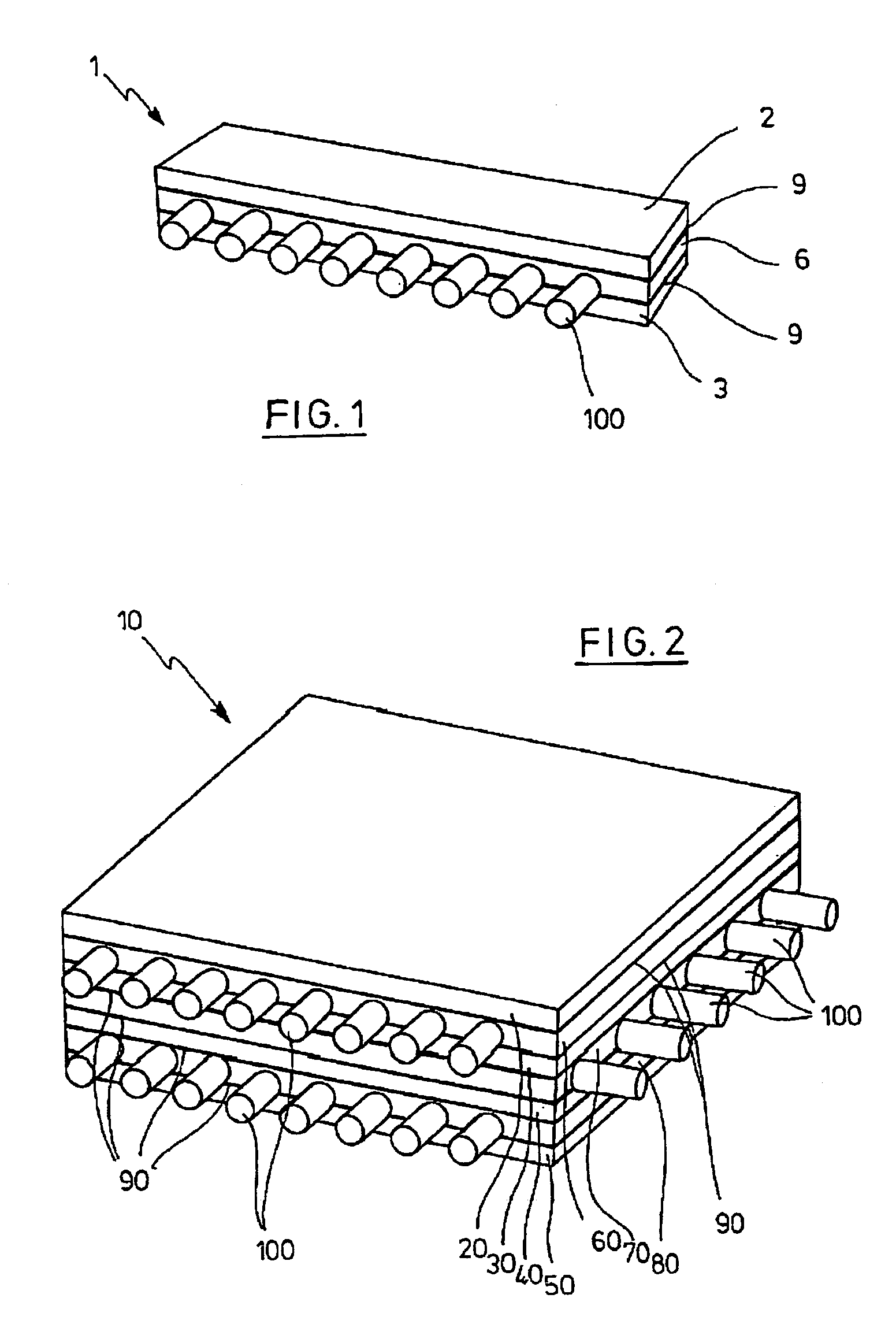Metallic layer material, reinforced with basalt fibers, as well as products made thereof
a technology of basalt fibers and metal layers, applied in the direction of synthetic resin layered products, transportation and packaging, efficient propulsion technologies, etc., can solve the problems of increasing production costs, increasing the weight of the lightweight structure, and material characteristics being closely linked to significantly higher composite materials cost, so as to improve mechanical and damage tolerance characteristics
- Summary
- Abstract
- Description
- Claims
- Application Information
AI Technical Summary
Benefits of technology
Problems solved by technology
Method used
Image
Examples
Embodiment Construction
[0025]The figures show metal-based fiber-reinforced composite materials. Exemplary embodiments of the present invention relate to laminating of metal sheets with a plastic layer comprising basalt fibers, which layer is bonded (or glued or attached) to the metal sheets. The laminate 1 or 10 comprises at least two metal sheets 2 and 3 (FIG. 1) or 20, 30, 40, 50 (FIG. 2), wherein the thickness of each metal sheet is less than 1.5 mm, in particular ranging from 0.1 to 0.8 mm. Between the sheets 2 and 3 (FIG. 1) or 20, 30, 40, 50 (FIG. 2), at least one plastic layer 6 (FIG. 1) or 60, 70, 80 (FIG. 2) is arranged. Adhesive connections 9 or 90 may bond the plastic layers 6 (FIG. 1) or 60, 70, 80 (FIG. 2) to the metal sheets 2 and 3 (FIG. 1) or 20, 30, 40, 50 (FIG. 2). The plastic layers 6 (FIG. 1) or 60, 70, 80 (FIG. 2) comprise basalt fibers 100 with a modulus of elasticity exceeding 50 GPa, which basalt fibers are parallel to each other in at least one direction, wherein the basalt fibers...
PUM
| Property | Measurement | Unit |
|---|---|---|
| thickness | aaaaa | aaaaa |
| tensile strength | aaaaa | aaaaa |
| elongation at rupture | aaaaa | aaaaa |
Abstract
Description
Claims
Application Information
 Login to View More
Login to View More - R&D
- Intellectual Property
- Life Sciences
- Materials
- Tech Scout
- Unparalleled Data Quality
- Higher Quality Content
- 60% Fewer Hallucinations
Browse by: Latest US Patents, China's latest patents, Technical Efficacy Thesaurus, Application Domain, Technology Topic, Popular Technical Reports.
© 2025 PatSnap. All rights reserved.Legal|Privacy policy|Modern Slavery Act Transparency Statement|Sitemap|About US| Contact US: help@patsnap.com


